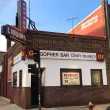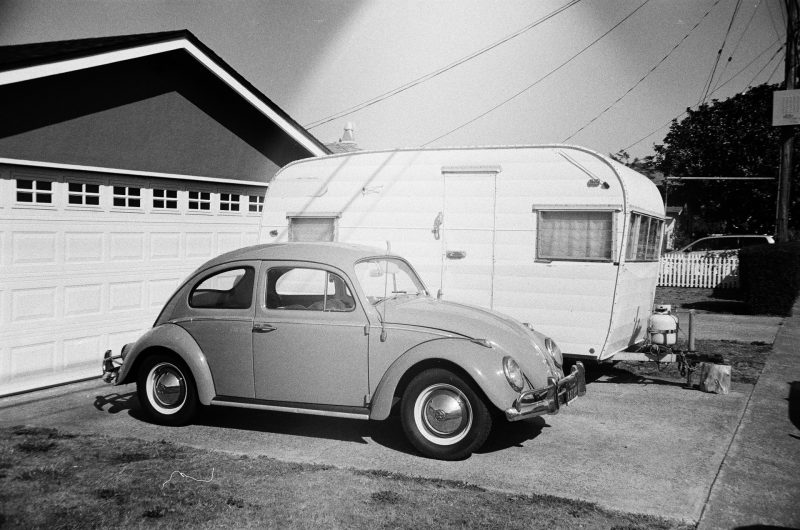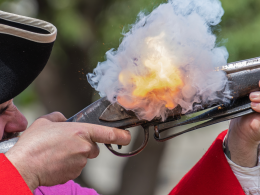Hitting America’s new interstate highway system with your family motorhome was unprecedented until the 1960s. Until that time, RV camping was more of a wealthy man’s luxury, enjoyed in hand-designed vehicles only available to those with supplemental incomes. But by the end of the 1950s, RV camping was more accessible thanks to mass-produced coaches.
So by the time the new decade rolled around, vacationers were primed for exploration. Newly constructed roads and campers like the “Shasta Canned Ham” let travelers bring home cross-country. And travelers no longer had to sleep in their autos alongside the road if they couldn’t find (or afford) a hotel.
Plus, more affordable choices in rigs meant RVers had more cash to extend those camping adventures. It seemed like the 1960s provided the perfect runway for an explosion in the world of recreational vehicles.
But what was it really like in this era? Let’s find out!

What Made RVs So Popular in the 1960s?
An innovative company, Winnebago, opened its doors in 1958 with the plan to design furniture for recreational vehicles. Little did they know they were laying the groundwork for making RVs accessible to the masses. By 1966, they had mastered a production line for a motorized coach, cutting a motorhome’s cost in half’.
During this time, the middle class was growing, and with better jobs making more money, they found recreational time on their hands. Exploring the regions around them became easier with the interstate highway system, and now they could do so in a reasonably priced RV like Winnebago’s F17.
Other campers found it easy to pull a trailer, park at a campsite, and then visit area attractions. It was a simple way to see the sites and still have a comfortable home base. So they opted for RVs like a Shasta or The Sundowner.

New RV Tech: What Innovative Features Came Out in the 60s?
Winnebago’s foray into mass production started with its creation of a “thermo panel,” a lightweight sidewall for newer RV models. Other companies made contributions like the Clark Cortez with the first front-wheel-drive motorhome and the Mustang Travel Trailer with a second-story bunk. The Jayco Jayhawk was the first to use a crank-up roof system that we still see in pop-up trailers today.
Even truck slide-in campers became popular during the 1960s with Holiday Rambler. And one enterprising company created The Trailerboat from 1960 to 1963, hoping to capitalize on campers who love to ‘live’ on the water. This small travel trailer had sleeping quarters, a storage area AND a detachable roof that could be used as a boat!

Popular RV Models in the 1960s
Some of the most popular RVs that harken back to the 1960s are the Winnebago F17, the Carriage Travel Trailer, and the Coachmen Cadet. The Saab 95K became popular because of its light weight, but it didn’t offer the horsepower to be a long-term contender. And Kamp King Koaches produced a tri-level truck camper with a view deck accessed by a pop-up.
How Much Did a New RV Cost in the 1960s?
Most recreational vehicles in the 1960s were priced for the everyday person, as companies saw the benefit in utilizing automotive line production to mass-produce their RVs. Winnebago, for instance, priced their new F17 at $5,000, nearly half the going rate for a motorhome at that time.
Small travel trailers sold for $1,100 to $3,500, depending on make and model. The prices were low to entice more people to join the traveling craze, and it seemed to work!
RV Campsites: What You Could Expect
Campgrounds in the 1960s grew in number and size as motorhome sales tripled. Many private campgrounds and public campsites started in many national forests and national parks.
But most official campsites were not ‘full hookup’ sites. Campers could opt for electricity and water in some cases, but many campsites were just available spaces with a picnic table and possibly a fire pit.

Demographics: Who Was Camping in the 1960s?
Those who could afford more custom-designed rigs and high-end models like those produced by Airstream or the Spartan Imperial Mansion travel trailer were still roaming the country. But with an increasing middle class who now had money to spend and vacation time to use, camping became the perfect way to enjoy the out-of-doors while venturing far from home.
The 1960s: A Hinge Point for RVs
The 1960s became a pivotal time in RVing, as mass production brought prices down. Americans took jobs that paid well and offered vacation time, so they had disposable time and money to burn. What better way to enjoy time off than to look for adventures while exploring the country in a new motorhome or trailer?
More recreational vehicle manufacturers began experimenting with RV designs and innovations, letting the industry grow by leaps and bounds. The industry is where it is today because of major strides taken almost 60 years ago.
If You Want the Latest Travel News, Join Our Mailing List
Don’t rely on biased RV industry news sources to keep you informed. Stick with Nomadic News. We publish articles and breaking stories that matter to you every weekday.










